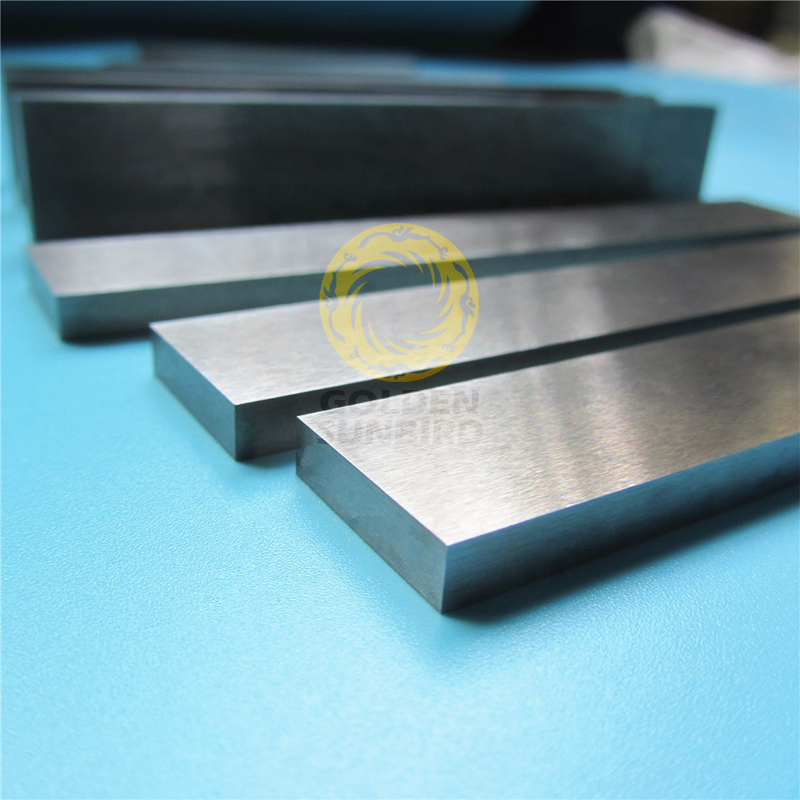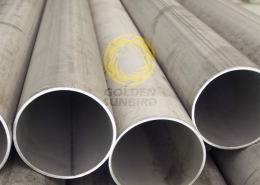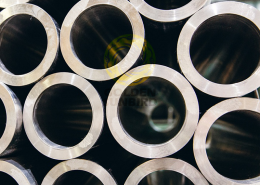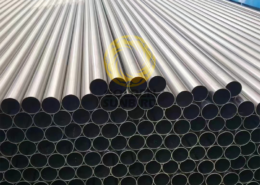ASTM B777 Tungsten Base High-Density Metal
- Non-magnetic Grade: NM90 Class 1, NM92.5 Class 2, NM95 Class 3
- Magnetic Grade: M90 Class 1, M92.5 Class 2, M95 Class 3, M97 Class 4
Features
ASTM B777 Tungsten Base, High-Density Metal
Composition, Density, and Hardness Properties
| Class | Nominal Tungsten Weight % | Density (g/cc) | Hardness (Rockwell “C” max) |
| 1 | 90 | 16.85–17.25 | 32 |
| 2 | 92.5 | 17.15–17.85 | 33 |
| 3 | 95 | 17.75–18.35 | 34 |
| 4 | 97 | 18.25–18.85 | 35 |
Note: For mechanically worked or aged material, the hardness can be as high as Rc 46.
Mechanical Properties (Minimum Values)
| Class | Ultimate Tensile Strength (ksi/MPa) | Yield Strength at 0.2% Offset (ksi/MPa) | Elongation (%) |
| 1 | 110 (758) | 75 (517) | 5 |
| 2 | 110 (758) | 75 (517) | 5 |
| 3 | 105 (724) | 75 (517) | 3 |
| 4 | 100 (689) | 75 (517) | 2 |
Note: Nonmagnetic composition for Classes 1, 2, and 3 shall have a minimum ultimate tensile strength of 94 ksi (648 MPa). Minimum elongation shall be 2% for Classes 1 and 2, and 1% for Class 3.
Machinability Requirements
| Class | Number of Holes |
| 1 | 8 |
| 2 | 6 |
| 3 | 4 |
| 4 | 2 |
This specification provides the requirements for tungsten-based high-density metals intended for uses such as weights or counterbalances in balancing, radiation shielding, and vibration-damping applications. For special applications, additional properties or requirements may be important and should be specified as part of the purchase order.
Technical Specifications
| Specification | Value |
| Standard | ASTM B777 Tungsten Base High-density Metals |
| Grade | Non-magnetic Grade: NM90 Class 1, NM92.5 Class 2, NM95 Class 3 Magnetic Grade: M90 Class 1, M92.5 Class 2, M95 Class 3, M97 Class 4 |
| Type | Plate, Block, Forging Stock |
| Finish | Clean, smooth surface finish |
| Dimension | Width: 25 – 610mm x Thickness: 5-100mm x Length: 200-3000mm |
| Manufacturing Process | Plate and Sheet: hot-rolled, hot-rolled, stress-relieved |
| Foil: cold-rolled, cold-rolled, stress-relieved | |
| Inspection Certificate | EN 10204 Type 3.1 (Mill Test Certificate), EN 10204 Type 3.2 (Witness Testing or 3rd Party Inspection) |
| Tests | Chemical analysis, tensile test, hardness test, and other non-destructive test (Hydrostatic, Pneumatic, and Ultrasonic tests) |
Key Properties
Tungsten Melting Point: Tungsten has the highest melting point of 3,422°C (6,191.6°F) of all metals.
Tungsten Density: Ranging from 17.0 to 18.5 g/cm³, significantly higher than steel or lead.
High Strength: Tensile strength typically ranges from 700 to 1400 MPa, depending on the alloy and processing.
Good Ductility: WHAs generally exhibit good ductility, allowing for shaping and forming.
High Modulus of Elasticity: Providing stiffness and resistance to deformation.
Excellent Hardness: WHAs possess high hardness, contributing to their wear resistance.
Good Machinability: WHAs can be machined using appropriate techniques despite their hardness.
Packing
Packed in plywood boxes.
Application
Radiotherapy: WHAs are used in collimators and shielding components for radiotherapy equipment, precisely targeting radiation to tumors while protecting healthy tissue.
Diagnostic Imaging: High-density tungsten alloys are employed in CT scanners and other imaging equipment for effective radiation shielding.
Industrial Radiography: WHAs are used in industrial radiography equipment to inspect welds and other structures, providing efficient radiation containment.
Nuclear Industry: Tungsten-based metals offer shielding solutions in nuclear power plants and research facilities, protecting personnel and the environment from radiation exposure.
Aerospace: WHAs are used as counterweights in aircraft control surfaces, balancing rotating components and ensuring stability.
Automotive Industry: Tungsten-based weights are employed in crankshaft balancing and tire balancing, reducing vibrations and improving performance.
Sporting Goods: High-density tungsten is used in golf club heads and tennis rackets for precise weight distribution and improved control.
Ordnance and Defense: Due to their high density and strength, WHAs are utilized in kinetic energy penetrators and other armor-piercing ammunition.
Drilling Industry: Due to their weight and wear resistance, tungsten-heavy alloys are used in drill collars and other downhole tools for directional drilling.
Electrical Contacts: W-Ni-Fe alloys are used in electrical contacts and switches due to their high melting point and resistance to arc erosion.








